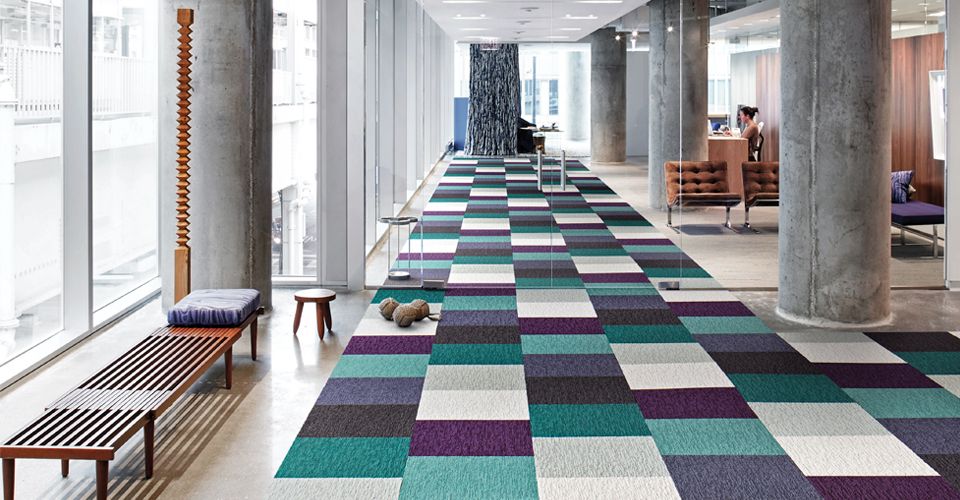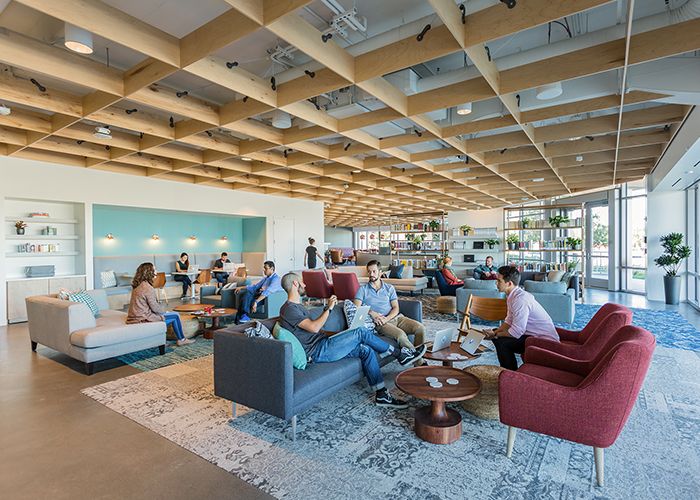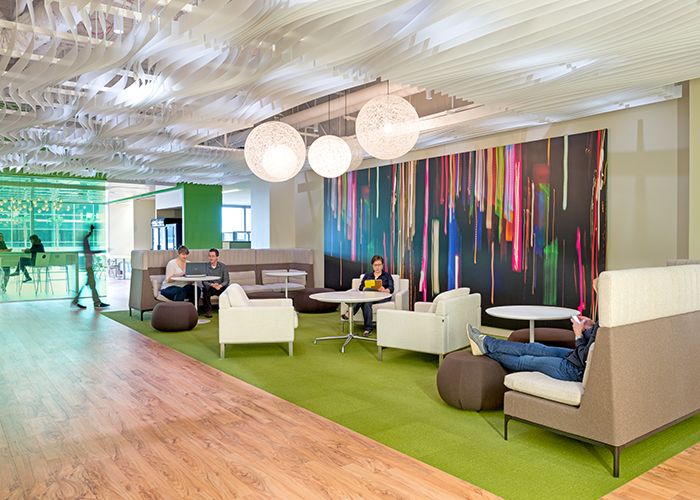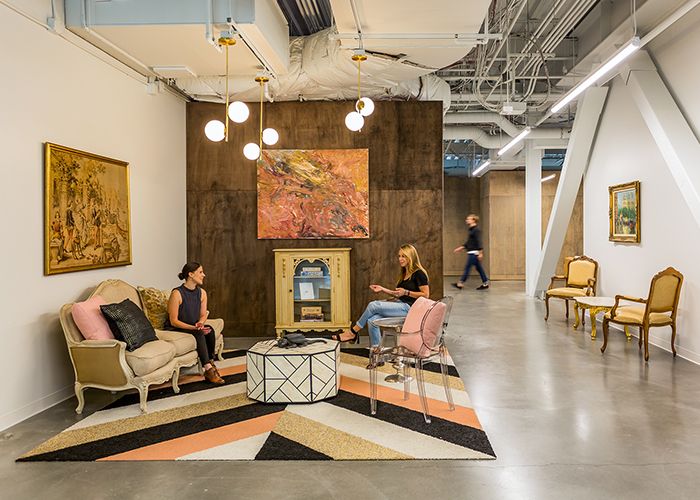The design of the office has evolved rapidly over the past few decades. First it was private offices. Then came cubicles, which lead to individualized, cubby-sized workstations.
Early millennials entering the workforce – stifled by a lack of personal space and a desire to collaborate – have sparked a movement in office design, changing the way we meet the needs of a changing workforce. This mindset has evolved into what is now called work choice: an intentional curation of the work environment catering to all functions and personalities.
Work choice and the multi-generational office
The emerging generation has matured in a me-centric culture. As a result, our environments continue to reflect a growing focus on individuality and customization. From the collaborative and extroverted to the intellectual and introverted, work choice doesn’t just include where you work—it also determines when and how you work.
Millennials’ lifestyles reflect this innate flexibility. They buy less real estate, get married less often and have fewer children. Millennials spend their energy and dollars cultivating life experiences versus gathering objects. Their lives are rooted in the present: living and sharing in the moment through a constant stream of live broadcasting.
With every new generation entering the workforce comes the ongoing challenge of designing for generational differences. More recently, workplaces have become relaxed, social and fluid, allowing for spontaneous interaction and cross-disciplinary conversation.
In essence, work is more closely resembling home.
Designing for the new office
At their core, flexible work environments create a strong desire to be alone together. Our growing attachment to technology is juxtaposed with a desire to experience the physical world. Cue the plush lounge furniture and shaggy area rugs.
Small seating groups, collaborative tables and lounge furniture offer work process freedom. FLOR Products Shown: Reoriented; Photo by Emily Hagopian
Even an open reception area has become a place for collaborative and private work. Product Shown: Monochrome; Photo by Jasper Sanidad
Note the residential feel of this office gathering spot thanks to the art, elevated finishes, and vintage-style furniture. FLOR Products Shown: In the Deep, Made You Look; Photo by Emily Hagopian
To that end, the new office layout drives us toward transitional areas between circulation, workstations and private offices. These intentionally-crafted common spaces are designed for spontaneous interaction and are dominated by a mix of textures. Think hard floors with cozy area rugs, slouchy arm chairs with brass accent tables and the lacquered finish of a coffee bar with felt-covered stools. Everything about the design inspires you to hang up your conference call and engage with those around you.
With space so clearly distinguished by functionality, focused work gravitates toward dimly lit cubbies and secluded workstations. Collaborative projects find themselves in common spaces filled with slouchy arm chairs, bar seating and a bustling cappuccino machine. The one-size-fits-all cubicle is replaced by cubbies, nooks, small seating groups, collaborative tables and lounge furniture that offer work process freedom.
It’s where business casual meets its after-work drinks friend.

Part of the new office design revolution? More color, more open space. FLOR Product Shown: Made You Look
This is the model adopted by many co-working spaces – providing freelancers and remote employees the feeling of a “home office” where they can interact and cross-pollinate ideas from different specialities. These meaningful connections not only spark creativity at work but also enrich the human experience.
Taking work home
In addition to the stylized embellishment of our offices, our homes are getting the sleeker treatment. As popular culture emphasizes experiences over things, home environments feature pared down interiors with highly intentional objects.
The more your work looks like your home, the more you wish your home looked like your work.


